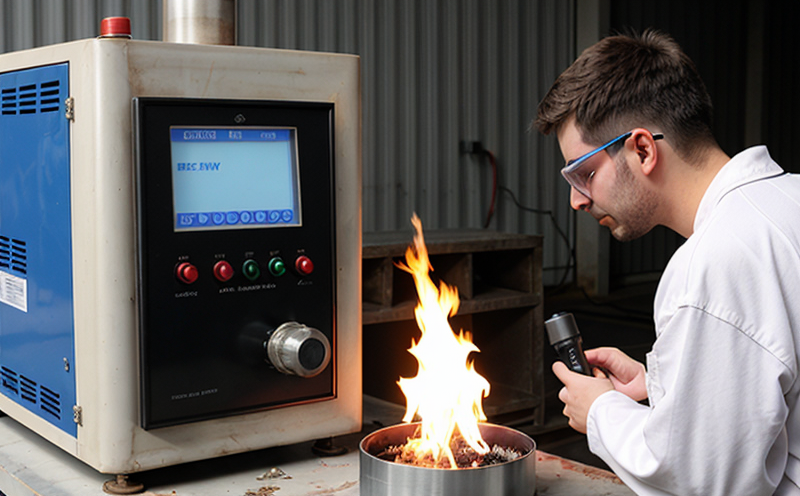DIN EN 15316 Part 4 Thermal Efficiency Testing
The DIN EN 15316 series of standards provides a comprehensive framework for the testing and certification of HVAC (Heating, Ventilation, and Air Conditioning) equipment. This article focuses on DIN EN 15316-4:2019-07, which specifically addresses thermal efficiency testing.
The standard is designed to ensure that HVAC systems meet stringent performance requirements, thereby enhancing energy efficiency and reducing environmental impact. Compliance with this standard not only ensures product quality but also supports sustainable development goals by promoting the use of efficient equipment.
Thermal efficiency tests are critical for evaluating how effectively an HVAC system converts input energy into useful output (heat or cooling). The test involves measuring the actual power consumption and delivered thermal power under controlled conditions. This allows manufacturers to compare their products against industry benchmarks, ensuring that they meet regulatory requirements and achieve market competitiveness.
The testing procedure outlined in DIN EN 15316-4 is rigorous and includes several stages:
- Preparation of the Test Specimen: The HVAC unit is prepared according to specified guidelines, including setting up the system in a controlled environment.
- Installation and Setup: All necessary sensors and measurement devices are installed to monitor key parameters such as input power, delivered thermal energy, and other relevant variables.
- Data Collection: The unit is operated under specific conditions defined by the standard. Data is collected at regular intervals to ensure accurate measurements.
- Analysis and Reporting: Collected data is analyzed using advanced computational methods to determine thermal efficiency accurately. Results are then compiled into a detailed report, providing insights into system performance.
The results of these tests play a crucial role in the certification process for HVAC equipment. Certification ensures that products meet all relevant standards and can be trusted by consumers and regulatory bodies alike.
Understanding the importance of thermal efficiency testing is essential for quality managers, compliance officers, R&D engineers, and procurement professionals involved with HVAC systems. This knowledge helps ensure that decisions are based on accurate data, leading to more informed choices about equipment selection and optimization efforts.
Applied Standards
The application of DIN EN 15316-4 is wide-ranging across various sectors. It applies particularly well to HVAC manufacturers who need to demonstrate compliance with international standards, ensuring their products meet both local and global market requirements.
This standard also benefits industry professionals involved in the design, manufacturing, installation, and maintenance of HVAC systems. By adhering to these stringent testing procedures, they can ensure that their equipment operates efficiently while minimizing operational costs over time.
The use of this standard is not limited to just one type of HVAC unit; it covers various types including air conditioners, chillers, heat pumps, and other similar devices. This versatility allows manufacturers flexibility in choosing the appropriate testing method for different product lines without compromising on quality assurance.
For those seeking certification or looking to improve energy efficiency within their facilities, compliance with DIN EN 15316-4 is highly recommended. It provides a robust framework that supports continuous improvement initiatives aimed at reducing environmental impact and improving overall business performance through efficient resource utilization.
Industry Applications
In the context of HVAC equipment testing, DIN EN 15316-4 finds application across numerous industries where energy-efficient solutions are paramount. For instance, in commercial buildings, this standard ensures that air conditioning units and heating systems operate at peak efficiency.
Healthcare facilities benefit from stringent testing procedures to maintain optimal indoor conditions, ensuring patient comfort and safety. Similarly, industrial settings use these tests to optimize production processes by reducing energy waste and lowering operational costs.
The retail sector also sees significant advantages in adopting DIN EN 15316-4 for its large-scale HVAC systems, enhancing both customer satisfaction and operational efficiency. Hotels and hospitality venues apply this standard to provide guests with comfortable environments while minimizing environmental impact.
These applications highlight the broad relevance of this testing methodology across diverse sectors, underscoring its importance in driving sustainability efforts globally.
Environmental and Sustainability Contributions
The implementation of DIN EN 15316-4 contributes significantly to environmental protection and sustainable development. By promoting the use of highly efficient HVAC systems, this standard helps reduce greenhouse gas emissions associated with energy consumption.
Compliance ensures that new equipment is designed not only for performance but also for longevity and minimal resource depletion during manufacturing and disposal phases. This holistic approach supports a circular economy model where resources are used sustainably throughout their lifecycle.
The use of advanced computational methods in analyzing test data enables manufacturers to identify areas for improvement, further enhancing energy efficiency without sacrificing functionality or reliability. Such improvements contribute positively to environmental conservation efforts by reducing reliance on non-renewable sources and promoting the adoption of renewable energy solutions whenever possible.
By focusing on thermal efficiency, DIN EN 15316-4 plays a pivotal role in fostering innovation within the HVAC industry, encouraging continuous advancements towards more sustainable practices. This contributes to broader societal goals related to climate change mitigation and resource conservation.





